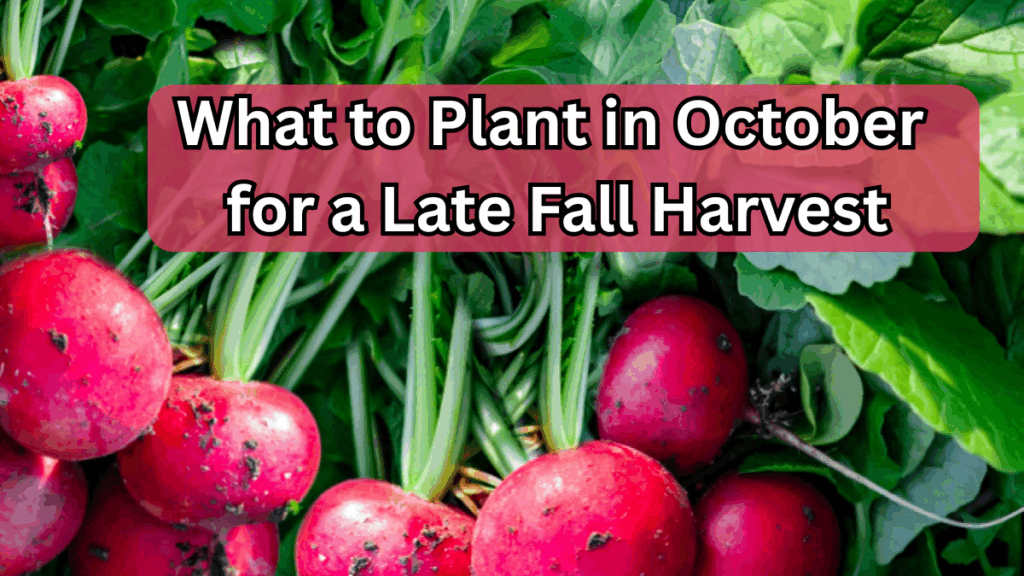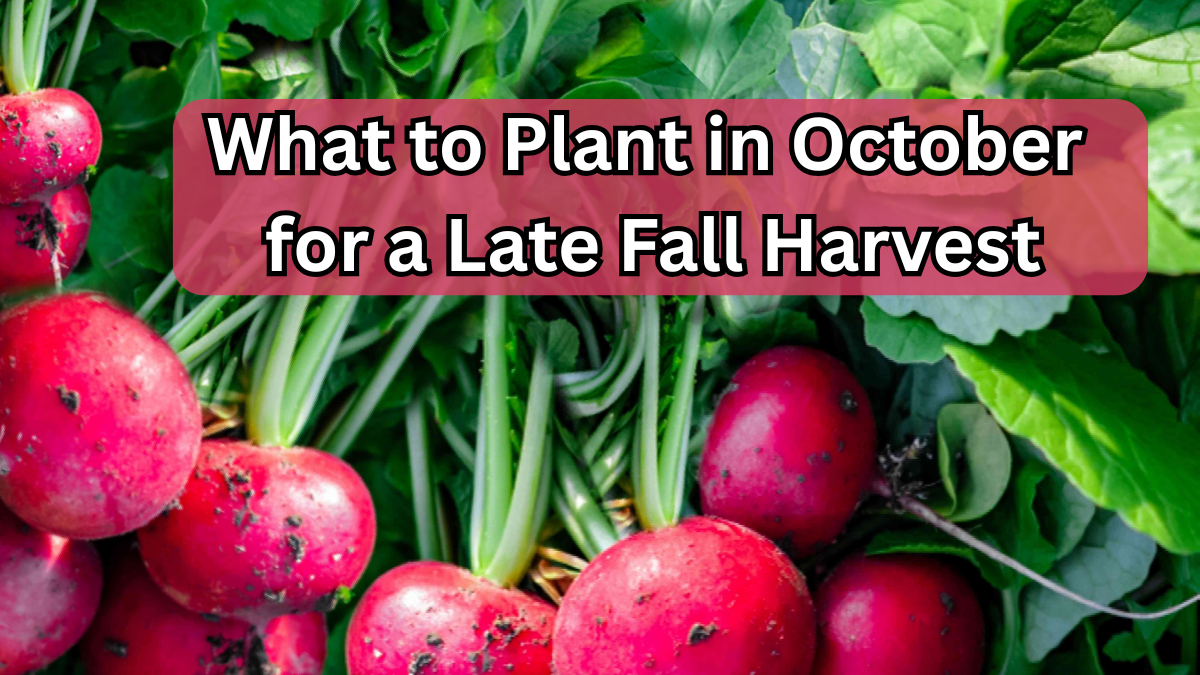October is a transitional month in the garden. With the temperatures dropping and daylight hours shortening, it’s the perfect time to focus on autumn gardening and plant crops that thrive in cooler weather. Knowing what to plant in October can ensure you enjoy a bountiful late fall harvest before winter sets in.

Why Plant in October?
Planting in October allows seasonal crops to mature in cooler temperatures, which can enhance their flavor. Many fall vegetables develop sweeter and more tender textures when grown in the crisp autumn air.
Some benefits of planting in October include:
-
Extended harvest period for late-season crops
-
Protection from summer pests and heat stress
-
Opportunity to grow nutrient-dense seasonal crops for your family
Best Vegetables to Plant in October
Here’s a list of top fall vegetables that can be planted in October for a late fall or early winter harvest:
| Vegetable | Ideal Planting Method | Days to Harvest | Notes |
|---|---|---|---|
| Spinach | Direct sow seeds | 40–50 days | Thrives in cool weather, perfect for autumn gardening |
| Kale | Transplants or seeds | 55–65 days | Frost-tolerant and flavorful |
| Lettuce | Direct sow | 30–45 days | Quick-growing, ideal for continuous harvest |
| Radishes | Direct sow | 25–30 days | Fast-growing and adds crunch to salads |
| Carrots | Direct sow | 60–80 days | Root vegetables taste sweeter after light frost |
| Garlic | Cloves | 6–8 months | Plant for harvest next summer; requires cold period |
| Broccoli | Transplants | 60–85 days | Prefers cooler temperatures for optimal growth |
| Cabbage | Transplants | 70–90 days | Works well in autumn gardening for winter meals |
Tips for October Planting
To make the most of your garden this season, consider these tips:
-
Prepare the soil: Add compost to enrich the soil and improve drainage
-
Choose frost-tolerant crops: Many fall vegetables can survive light frosts
-
Use containers or raised beds: Perfect for gardeners with limited space
-
Water wisely: Cooler temperatures reduce evaporation, but don’t let the soil dry out
Companion Planting for Fall Vegetables
Certain crops grow better together and can maximize your garden space while reducing pests:
| Crop 1 | Crop 2 | Benefit |
|---|---|---|
| Carrots | Lettuce | Lettuce shades soil, keeping carrots cool |
| Spinach | Radishes | Radishes loosen soil for spinach roots |
| Broccoli | Garlic | Garlic deters pests naturally |
| Kale | Onions | Onions repel aphids that target kale |
Extending Your Autumn Harvest
Even after planting, you can extend your late fall harvest with a few simple strategies:
-
Mulching: Protect roots from early frosts
-
Row covers: Keep crops warm and safe from pests
-
Succession planting: Sow seeds every two weeks to maintain a continuous supply
FAQs
1. Can I still plant tomatoes in October?
Tomatoes generally require warm weather, so October is too late in most regions. Instead, focus on frost-tolerant fall vegetables like kale, spinach, and radishes.
2. Which crops grow fastest for a late fall harvest?
Radishes, lettuce, and spinach mature quickly, often within 30–50 days, making them perfect for October planting.
3. How do I protect my crops from early frost?
Use row covers, cloches, or mulch to insulate the soil and protect sensitive plants from frost damage.
4. Is container gardening effective for autumn crops?
Absolutely! Containers or 5-gallon buckets allow better soil control and mobility, ideal for autumn gardening.
Click here to learn more
